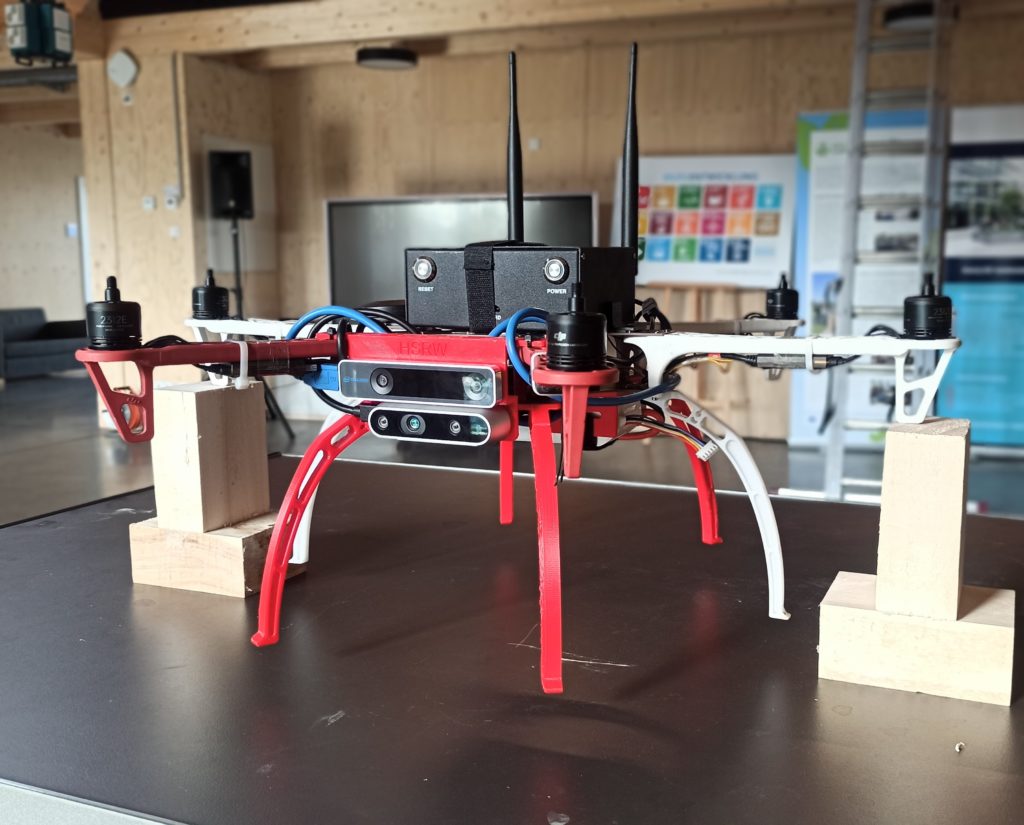The drone laboratory enables rapid prototype development as well as testing and deployment of new technologies. The laboratory’s research focuses on physical interactions with drones, precise indoor and outdoor positioning, and the development of sensor fusion for remote sensing and autonomous navigation (simultaneous localization and mapping, SLAM).

Drones are used in various subject areas. They are used in industry for the inspection of large systems, in logistics in order to deliver packages or to bring blood supplies and medicine to remote areas. The cooperation with the Green FabLab is particularly closely linked in the areas of agriculture and forestry as well as nature conservation tasks. For example, using special sensors and algorithms, drones can detect pests or animals or even poisonous plants in fields and inform farmers about them. Drones fly autonomously, i.e. independently, with several optical sensors over the pastures and collect data. These are analyzed by an algorithm and the position of, for example, poisonous plants that could harm pasture animals is saved. Another drone can then target these positions and inject herbicides into the plants to eliminate the plant. This not only saves time, but also limits the herbicide pollution in the environment.
In the outside area of the Green FabLab, a drone cage is being developed for testing outdoor positioning systems. The proximity to the Green FabLab and its diverse fields of activity also offer synergies for close cooperation with other laboratories at HSRW, in particular the drone laboratory, IoT laboratory and the Earth Observation Lab.



